Superyacht Delivered for NBA Star Tony Parker
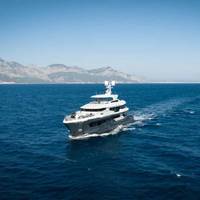
Infinity Nine, the second of the Kando series of contemporary explorer yachts from AvA Yachts was delivered to its owner NBA basketball star Tony Parker in early November.Atilla Küçükdiker, chairman and founder of AvA Yachts, said, “It is a proud and happy day that we as AvA Yachts team have delivered Infinity Nine! We describe our Kando series yachts as contemporary explorers and Infinity Nine really is a superb demonstration of both contemporary style, inside and out, and superb exploration potential with class-beating efficiency…
Bureau Veritas Joins Maritime Drones Project
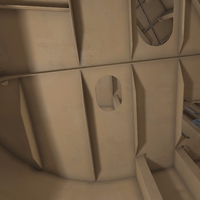
The potential for drones to be used for inspections is not new, notes Bureau Veritas, but to date trials have not focused on specific survey requirements for ship structures in enclosed spaces; the RECOMMS project will do just that. Bureau Veritas has joined RECOMMS (Remote Evaluation of Coatings / Corrosion on Offshore Machinery and Marine Structures / Ships), a joint investment project (JIP), to develop drones with the capability to inspect steel structures in enclosed spaces.
NBKB Surveys for Inland Vessels
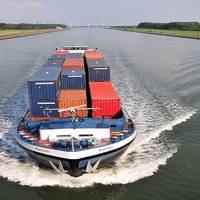
Jaco Osseweijer of Verweij & Hoebee, a subsidiary of BMT Group, is an expert on inland navigation vessels. As Chairman of the technical committee of the Netherlands Bureau for Inspections of inland navigation vessels (NBKB) he is involved in the mandatory inspection regime for these vessels and explains how the system works. To those involved with deep sea or blue water shipping, brown water shipping is a bit of a mystery. The extent and variety of ships using the world’s major rivers is vast.
DNV GL Examines Container and Bulk Shipping Trends
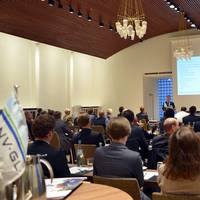
DNV GL’s latest Container Ship Forum and Bulk Carrier Forum looked at a broad spectrum of topics including environmental regulations, trends in ship design as well as the new DNV GL rule set. Some 150 representatives from the container and bulk industry met with DNV GL experts at the forums in Hamburg to hear the presentations and participate in informal discussions. As economy of scale is reducing transportation costs per box, the demand for ever bigger vessels is continuing.
The Jensen Marine “HandySize” Class Tug
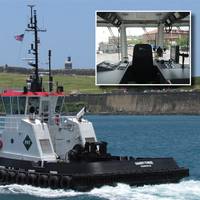
Designed by Jensen Naval Architects and Marine Engineers, and built by the Great Lakes Shipyard of Cleveland, Ohio a 74-foot workboat is quickly making a name for itself; in and out of the water. The “HandySize” Class Tug was designed to fill the niche between the 2,400 to 3,200 HP market for harbor workboats, fireboats, and construction operations and coastal towing, too. The Tug model 2800 is powered by two Cummins QSK38,1400HP diesel engines rated at 1800 rpm, providing a total of 2,800 HP – or in order words, just right for those niche tasks assigned to a Great Lakes workboat.
New Handysize Tug Completes Seatrials

Great Lakes Shipyard has successfully completed seatrials of the “HANDY-ONE”, the first tug of the new HANDYSIZE Class to be delivered to TUGZ International, LLC, the well-known and successful owner and charterer of a fleet of Z-Class tractor tugs. Both the new HANDYSIZE Class and the Z-Class tugs were designed for Tugz by Jensen Maritime Consultants, Seattle. The sea trials, including speed and endurance trials were performed in the icy waters of Lake Eire under freezing winter conditions.
Marine Innovations
In extending its adherence to delivering cost-efficient and safety driven technologies, DNV has introduced a new means of quickly and accurately determining steel thickness can speed ship surveys. It is especially valuable in inspecting old and corroded steelwork. Present-day methods, based on ultrasonic thickness measurements, are said to have dubious reliability on heavily corroded plates, and for large vessels are also considered too slow. The basic technological challenge was to transmit 100 percent of the signal energy through corroded steel plates, and receive and interpret the reflected signal to give an accurate thickness measurement. The basic principles of the new measuring method (half-wave resonance) have been known for 40 years.
IACS Website Tracks Thickness Measurement Companies
A new initiative, for closer monitoring of steel thickness measurement companies, has been taken by the International Association of Classification Societies (IACS). Under a new Procedural Requirement (PR 23), which took effect on 1 August, all IACS members are obliged to report any change in the status of approval of TM companies. A full list of thickness measurement (TM) companies approved by IACS members is now available on the IACS Website (www.iacs.org.uk). These TM companies are approved to take steel thickness gauging of ships subject to the Enhanced Survey Program (ESP). IACS Permanent Secretary Richard Leslie says: “TM companies play a central role in the assessment of vessel condition.
Bureau Veritas To Suggest Safety Rules To French Government
French ship classification society Bureau Veritas (BV) was to make three tanker safety proposals to the French government at a meeting last Thursday, proposals are designed to help improve tanker surveys and provide early warning of potential structural and safety problems for ships, BV said. The French government has already pledged to stiffen tanker safety standards when it takes over the European Union presidency in the second half of this year. Bureau Veritas said all ships over 15 years old should be required to undergo surveys which allow access to all cargo tanks and inspection of ballast tanks. Extra steel thickness requirements would be made.
New Steel-Thickness Measurement Promises Faster Surveys
Based on half-wave resonance measurements, a new means of quickly and accurately determining steel thickness can speed ship surveys. It is especially valuable in inspecting old and corroded steelwork. The new DNV system, launched at Nor-Shipping '99 is unique. Present-day methods, based on ultrasonic thickness measurements, are not reliable on heavily corroded plates, and for large vessels are also considered too slow. The basic technological challenge was to transmit 100 percent of the signal energy through corroded steel plates, and receive and interpret the reflected signal to give an accurate thickness measurement. The basic principles of the new measuring method (half-wave resonance) have been known for 40 years.
New Steel-Thickness Measurement Promises Faster Surveys
Based on half-wave resonance measurements, a quick, accurate means of determining steel thickness can speed ship surveys. It is especially valuable in inspecting old and corroded steelwork. Present-day methods, based on ultrasonic thickness measurements, are not reliable on heavily corroded plates, and for large vessels are also considered too slow. A new Det Norske Veritas (DNV) system addresses the technological challenge of transmitting 100 percent of the signal energy through corroded steel plates, and receiving and interpreting the reflected signal to give an accurate thickness measurement. The basic principles of the new measuring method (half-wave resonance) have been known for 40 years.
Bureau Veritas To Suggest Safety Rules To French Government
French ship classification society Bureau Veritas will make a number of tanker safety proposals to the French government at a meeting this week. The proposals will help improve tanker surveys and provide early warning of potential structural and safety problems for ships, officials said. Bureau Veritas officials said the group will make three main proposals at the meeting on Feb. 10. The first of these is that all ships over 15 years old should be required to undergo surveys that allow access to all cargo tanks and inspection of ballast tanks. Extra steel thickness requirements would be made. Port inspection reports should also be forwarded to classification societies and a computerized database of vessels' entire structural and repair histories collated, Bureau Veritas will recommend.









